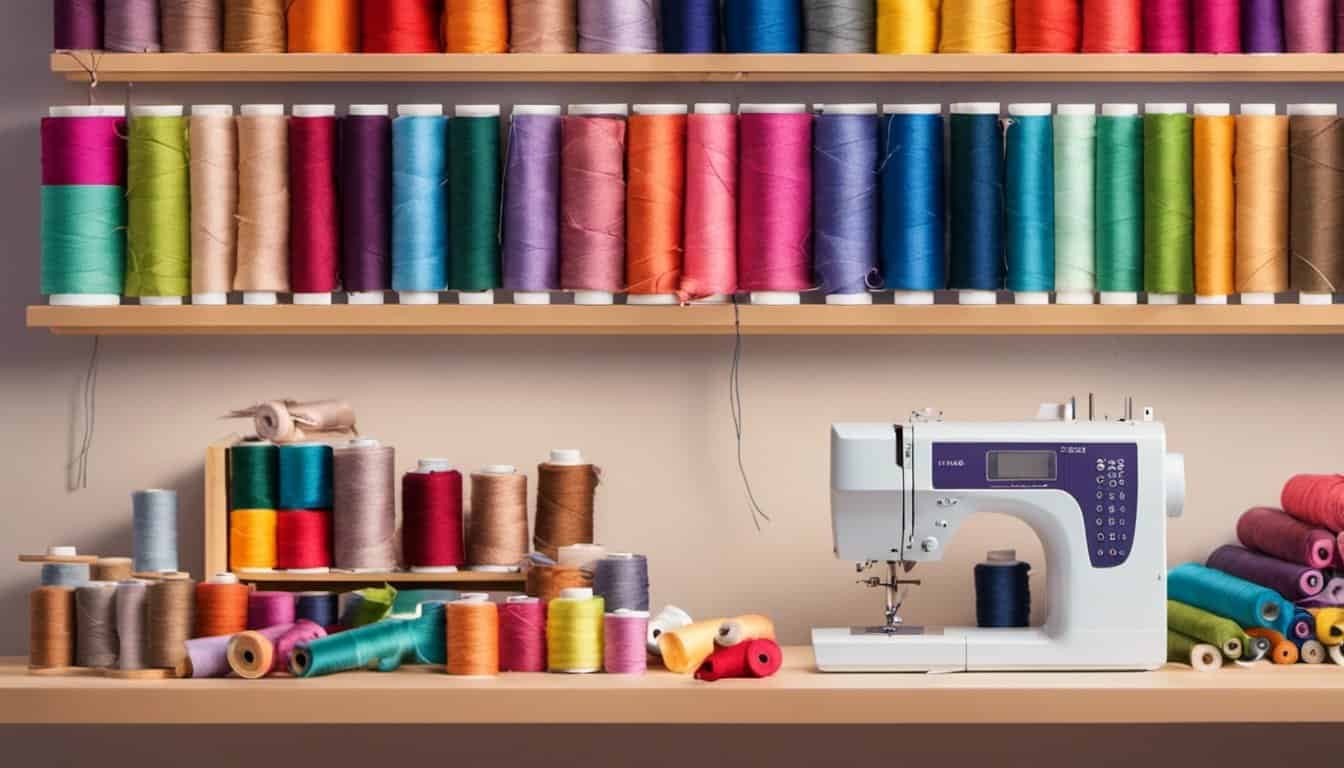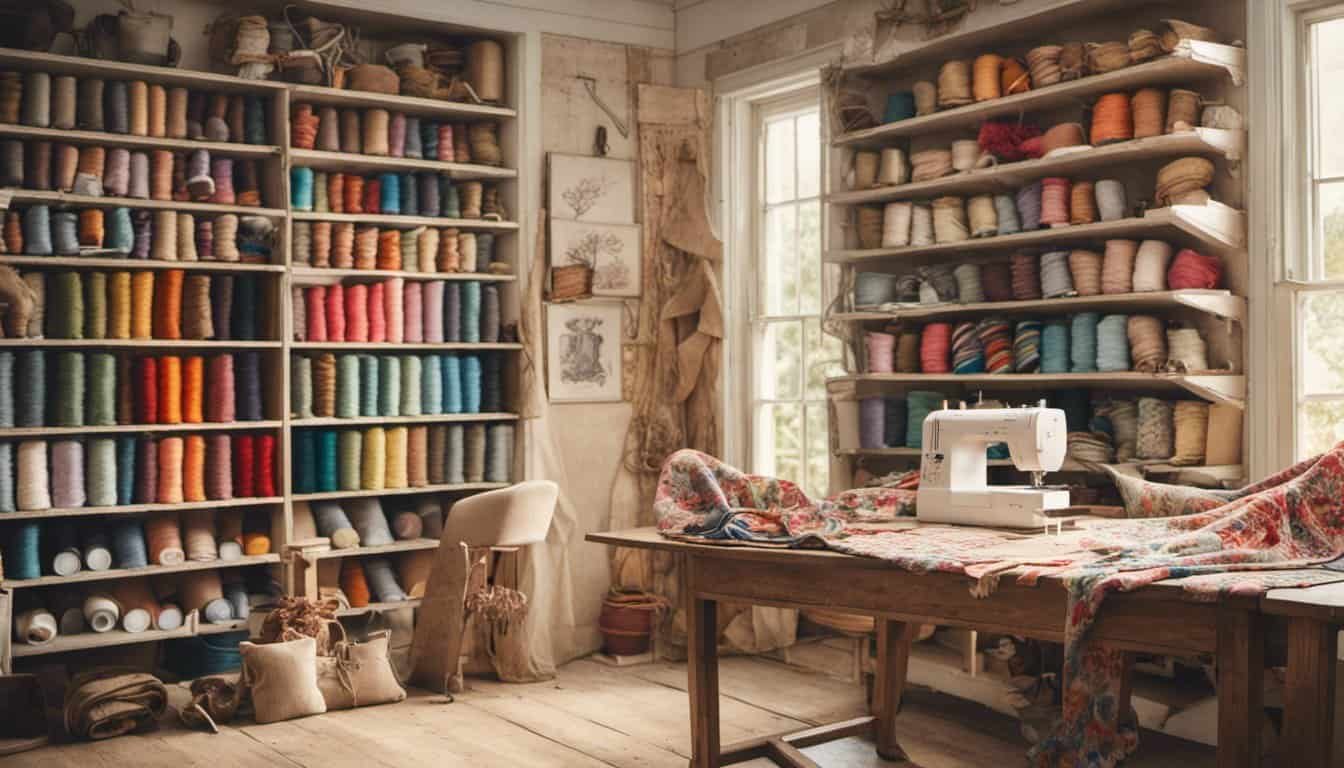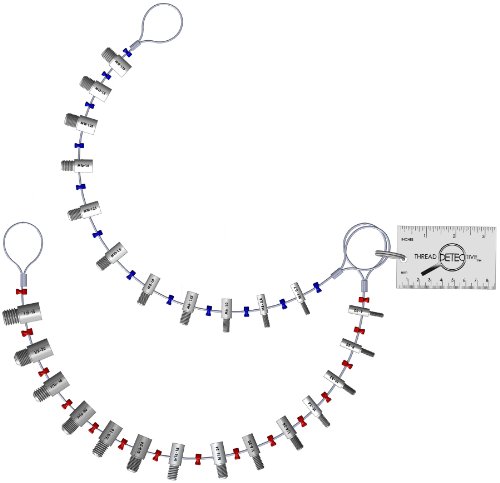Are you tired of your sewing projects falling apart? It’s time to take a closer look at your sewing thread. Testing your thread before you start a project can make all the difference in the quality and durability of your finished piece. In this article, we’ll explore the importance of testing sewing thread and provide you with some easy and effective methods to ensure you’re using the right thread for your needs. So, grab your sewing kit and let’s get started on the path to better sewing results!
When it comes to sewing, the thread you choose is just as important as the fabric and the needle. Testing your sewing thread is crucial to ensure that it can withstand the tension and stress of your sewing machine. By testing your thread beforehand, you can avoid issues like breakage, fraying, and uneven stitches. Whether you’re working on a delicate garment or a heavy-duty project, taking the time to test your sewing thread will save you time, frustration, and ultimately, produce better results.
So, how do you go about testing your sewing thread? There are a few simple methods you can use to determine its strength and quality. From the classic snap test to the twist test, we’ll walk you through each step so you can confidently choose the right thread for your next sewing adventure. By investing a little time in testing your sewing thread, you’ll be able to sew with confidence, knowing that your stitches will hold up and your creations will stand the test of time.
Why Testing Sewing Thread is Important
When it comes to sewing, embroidery, knitting, or any other craft project, using the right thread is crucial for achieving optimal results. Testing your sewing thread before starting a project is a step that should never be skipped. Why? Because it can make a world of difference in the quality and durability of your finished piece.
Here’s why testing sewing thread is important:
- Preventing Breakage: By testing your thread, you can identify if it’s prone to breakage under tension. Nothing is more frustrating than having your thread snap in the middle of a stitch or seam. By testing beforehand, you can ensure that your thread is strong enough to withstand the demands of your project.
- Avoiding Fraying: Fraying thread can cause unsightly and messy stitches. By testing the thread’s resistance to fraying, you can avoid this issue altogether. When you have a thread that doesn’t fray easily, you’ll achieve cleaner and more professional-looking stitches.
- Ensuring Even Stitches: Uneven stitches can ruin the aesthetic appeal of your project. By testing your thread, you can determine if it’s prone to tension issues. Thread that is too loose or too tight can result in uneven stitches. By knowing how your thread behaves, you can adjust your tension settings or choose a different thread if necessary.
- Prolonging the Lifespan of Your Creation: Investing time and effort into crafting a piece deserves a thread that can stand the test of time. By testing the durability of your thread, you can ensure that your hard work won’t unravel or fall apart after a few uses or washes.
Different Types of Testing for Sewing Thread
When it comes to testing your sewing thread, there are a few different methods you can use to ensure its strength, quality, and suitability for your project. The type of testing you choose will depend on the specific characteristics you want to evaluate. Let’s explore some of the common types of testing for sewing thread:
- Tensile Strength Testing: This type of testing measures the maximum amount of force sewing thread can withstand before breaking. To perform this test, you’ll need a thread strength tester or a simple manual method. Attach one end of the thread to a secure point and gradually apply force to the other end until it snaps. The higher the tensile strength, the more durable the thread.
- Abrasion Resistance Testing: This test determines how well the thread can withstand rubbing and friction. To perform this test, take a length of thread and rub it back and forth between your fingers. If the thread quickly frays or breaks, it may not be suitable for projects requiring high abrasion resistance.
- Colorfastness Testing: Colorfastness is crucial if you’re using dyed or colored thread for your project. To test for colorfastness, wet a small section of the thread and rub it firmly against a white cloth or paper towel. If the color transfers, it may bleed onto your fabric in the wash or over time.
- Knot Strength Testing: The strength of the knots you tie with the thread is essential to prevent your projects from falling apart. To test knot strength, tie a knot using the thread and see how much force it takes to make the knot slip or break. Stronger thread will hold up better in this test.
Remember, testing your sewing thread can help you choose the right thread for your project and enhance the overall quality of your creations. While these tests can provide valuable information, it’s important to keep in mind that different projects may have unique thread requirements, so consider the specific needs of your project.
Testing the Strength and Durability of Sewing Thread
When it comes to sewing projects, you want your thread to be strong and durable. Testing the strength and durability of your sewing thread is an essential step to ensure the longevity of your creations. Here are a few methods to assess the quality of your thread and make an informed decision for your next project:
Tensile Strength Testing
Tensile strength testing is a common method used to evaluate how much stress a thread can withstand before it breaks. To perform this test, simply secure one end of the thread to a fixed point and the other end to a weight. Gradually increase the weight until the thread snaps. The higher the weight it can hold, the stronger the thread.
Abrasion Resistance Testing
Abrasion resistance testing measures a thread’s ability to withstand friction and rubbing. To test this, take a length of thread and repeatedly rub it against a rough surface. If the thread starts to fray or break after a few rubs, it may not hold up well in high-friction scenarios, such as sewing on denim or upholstery. Look for threads with good abrasion resistance for heavy-duty projects.
Colorfastness Testing
Colorfastness is crucial, especially if you’re working on projects that require frequent washing or exposure to sunlight. To test for colorfastness, dampen a white cloth and rub it against the thread. If the color transfers onto the cloth, it means the thread may bleed or fade over time. Opt for threads that are labeled as colorfast to maintain the integrity of your projects.
Knot Strength Testing
Knot strength testing evaluates how well a thread holds up when tied into knots. Tie different knots with your thread and gently tug on them. If the thread breaks or slips easily, it may not be suitable for projects that require secure knots, like attaching buttons or creating jewelry.
Testing the Colorfastness of Sewing Thread
When it comes to choosing sewing thread for your projects, colorfastness is a key factor to consider. Your vibrant and beautifully stitched creations should stand the test of time and washing, without the colors bleeding or fading. To ensure the longevity of your masterpieces, it’s important to test the colorfastness of your sewing thread.
Here are some simple steps to test the colorfastness of your sewing thread:

1. Select a representative piece of fabric: Choose a fabric that is similar to the one you’ll be using for your project. It’s important that the fabric you select has similar color properties and reacts similarly to washing and care.
2. Prepare a test sample: Cut a small piece of your selected fabric, about 2 inches by 2 inches. This will be your test sample.
3. Attach the sewing thread: Thread your sewing needle with a few inches of the thread you want to test. Sew a small, tight stitch on one corner of the fabric sample, creating a loop.
4. Prepare the test solution: Fill a small bowl or cup with warm water. Add a small amount of mild detergent to the water and mix well.
5. Test the colorfastness: Submerge the fabric sample with the attached sewing thread into the test solution. Gently agitate the fabric in the water for a couple of minutes, being careful not to put too much stress on the thread.
« Shocking Reasons Behind Sewing Bee’s Surprising Move Revealed – Find Out the Secret Strategy Behind the Shift
Unleash Your Sewing Superpowers: Discover the Best College for Mastering the Art »
6. Observe the results: Remove the fabric from the test solution and gently rinse it under running water. After rinsing, lay the fabric flat on a clean towel and allow it to air dry. Once dry, inspect the fabric sample for any signs of color bleeding, fading, or discoloration.
By testing the colorfastness of your sewing thread, you’ll have the confidence that your creations will remain vibrant and beautiful, even after repeated washing and care. Remember, different threads may have different colorfastness properties, so it’s always a good idea to test before starting your project.
Testing the Performance of Sewing Thread under Different Conditions
When it comes to sewing, embroidery, knitting, or any other craft project, the performance of your sewing thread is vital. To ensure that your creations withstand the test of time, it’s important to test the thread under different conditions. Let’s take a closer look at how you can evaluate the performance of your sewing thread.
Tensile Strength Testing
One crucial aspect of testing sewing thread is assessing its tensile strength. This test measures the breaking strength of the thread. To conduct this test, you’ll need to secure one end of the thread to a fixed point and the other end to a strain gauge. Apply a gradual force to the thread until it breaks. This will give you an idea of how much tension the thread can withstand. Look for a thread that has a high tensile strength, as it will be less likely to break during sewing or other craft activities.
Abrasion Resistance Testing
Another important factor to consider is the abrasion resistance of the thread. This test evaluates how well the thread holds up against rubbing or friction. Use a rubbing machine to subject the thread to repeated back-and-forth movement until it breaks. A thread with high abrasion resistance will be able to withstand the wear and tear of frequent use without fraying or breaking.

Colorfastness Testing
If you want your creations to maintain their vibrant colors, colorfastness testing is essential. To test the colorfastness of your sewing thread, select a representative piece of fabric and prepare a test sample. Attach the sewing thread to the fabric and create a test solution using water and detergent. Submerge the fabric sample and observe the results after washing and drying. A thread with good colorfastness will retain its color without bleeding or fading.
Knot Strength Testing
Lastly, evaluating the knot strength of your sewing thread is crucial. This test determines how well the thread holds up when tied in knots. Tie several knots using the thread and gradually apply force until the knots break. Look for a thread that exhibits strong knot strength, as it will prevent the thread from coming undone while you’re sewing or crafting.
By testing the performance of your sewing thread under different conditions, you can make informed decisions about the quality and durability of the thread. Remember to consider factors such as tensile strength, abrasion resistance, colorfastness, and knot strength when selecting the ideal thread for your project. So, before you dive into your next sewing or
Conclusion
By testing your sewing thread before diving into a project, you can ensure that you achieve the best possible results. This simple step can prevent breakage, avoid fraying, and ensure that your stitches are even. Not only that, but it will also help prolong the lifespan of your creations, allowing you to enjoy them for years to come.
There are various types of tests that you can perform on your sewing thread to determine its suitability for your project. These include assessing its tensile strength, abrasion resistance, colorfastness, and knot strength. By conducting these tests, you can make informed decisions about the quality and durability of the thread, ensuring that you choose the right one for your specific needs.

Taking the time to test your sewing thread may seem like an extra step, but it is well worth the effort. It can save you from frustration and disappointment down the line, and it will ultimately contribute to the overall quality of your creations. So, before you start your next sewing project, remember to give your thread a thorough test. You’ll be glad you did!










